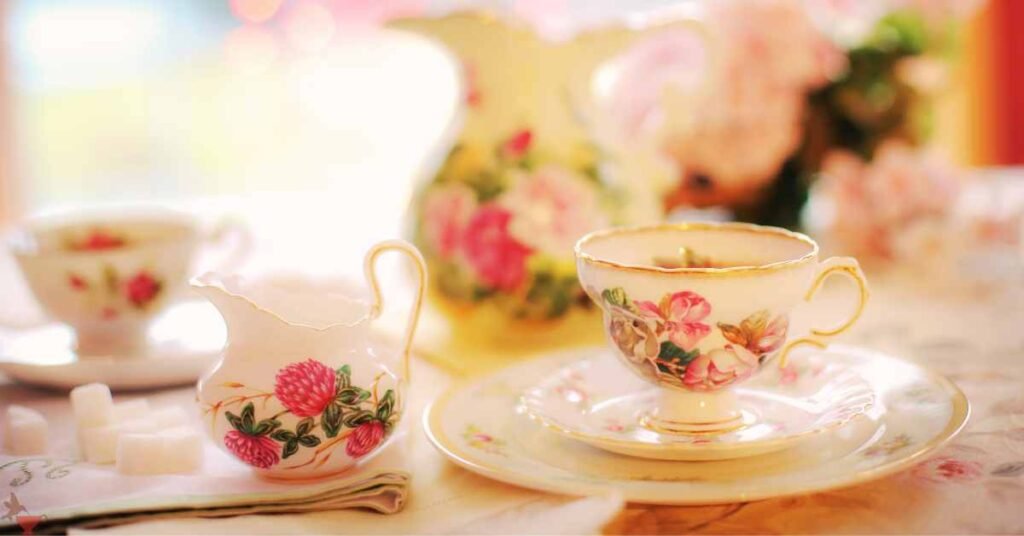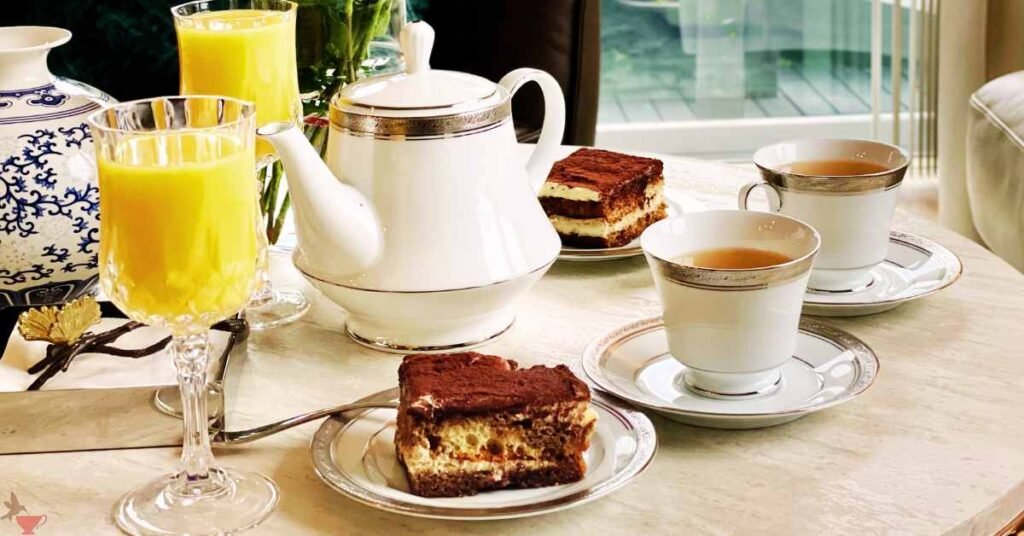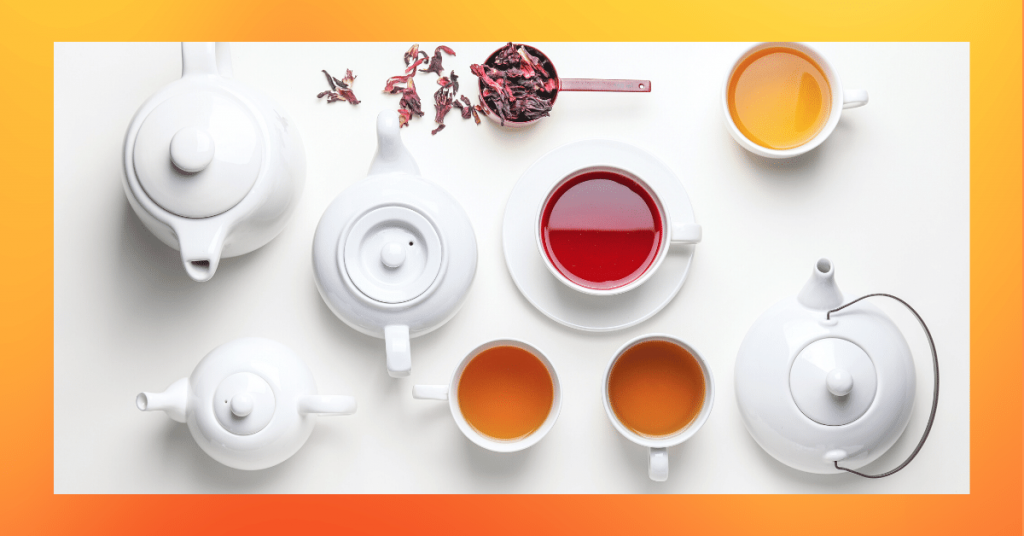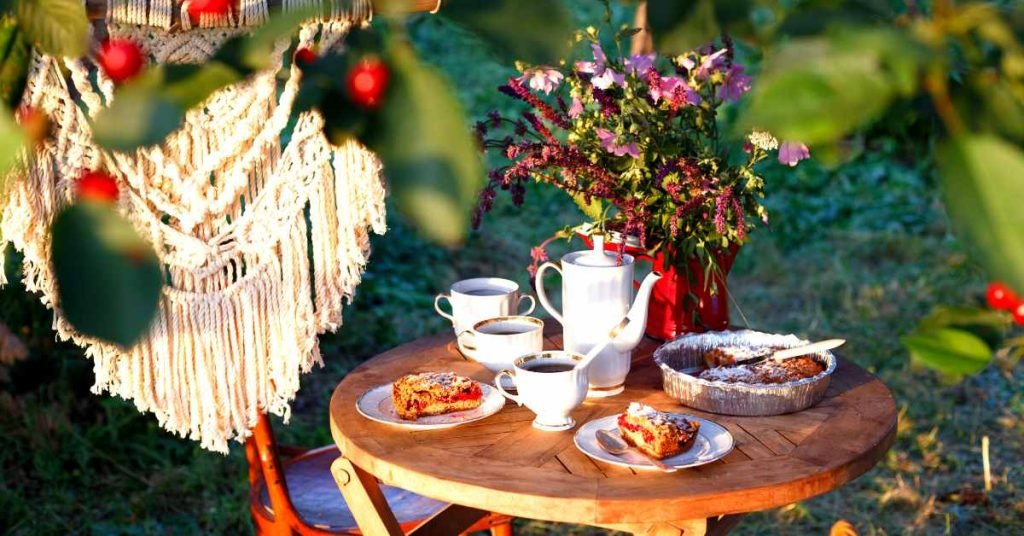Afternoon tea, a beloved British tradition, has captivated people around the world with its charm, elegance, and delectable treats.
Originating in the 19th century, this delightful ritual has stood the test of time and continues to be celebrated today.
In this article, we will explore the history, food, types of tea, and the acceptance of afternoon tea in the United States.
History of Afternoon Tea

Anna, the 7th Duchess of Bedford is credited with popularizing the concept of afternoon tea in the 1840s.
During this era, it was customary to have only two main meals a day – breakfast and dinner, leaving a long gap between the two.
Feeling a “sinking feeling” in the afternoon, the Duchess began requesting tea and a light snack to be served in her private quarters.
This ritual quickly caught on and became a fashionable social event among the upper classes.
Food and Etiquette
One of the highlights of afternoon tea is the delectable array of treats that accompany the tea itself.
Traditional offerings include finger sandwiches with various fillings such as cucumber, smoked salmon, or egg, delicate pastries like scones with clotted cream and jam, and a selection of cakes and biscuits.
The presentation is often ornate, with tiered cake stands and delicate china, adding to the overall elegance of the experience.
Etiquette plays a significant role in afternoon tea.
The proper way to enjoy this ritual is to start with the sandwiches, followed by scones and pastries.
Scones are traditionally served with clotted cream and jam, with a debate still ongoing about whether to add the cream or jam first.
The tea should be poured after the food has been enjoyed, and milk is typically added after pouring the tea into the cup.
Types of Tea

Tea is, of course, the centerpiece of afternoon tea. While black tea is the most commonly served variety, other types like green, white, and herbal teas are also popular choices.
Some of the popular black teas include Earl Grey, Darjeeling, and English Breakfast, each with its distinct flavor profile and aroma.
In recent years, there has been a growing interest in specialty teas and unique blends.
These include fruit-infused teas, floral teas, and even exotic options such as matcha or oolong tea.
The diverse range of tea options ensures that there is something to suit every taste preference during afternoon tea.
Acceptance of Afternoon Tea in the US
Although afternoon tea originated in Britain, it has gained popularity in the United States over the years.
Many hotels, tea houses, and upscale restaurants across the country now offer afternoon tea as a special experience for guests.
In cities like New York, San Francisco, and Boston, it is not uncommon to find establishments dedicated solely to the art of serving afternoon tea.
However, our favorite afternoon tea spot so far is Hummingbird Tea Room and Bakery in The Woodlands, TX.
The acceptance of afternoon tea in the US can be attributed to its association with elegance, refinement, and relaxation.
It provides a welcome respite from the fast-paced modern lifestyle, allowing individuals to slow down and savor the moment while indulging in delicious treats and quality tea.
It has also become a popular choice for bridal showers, baby showers, and other social gatherings, adding a touch of sophistication to special occasions.
Final Word

Afternoon tea, with its rich history, delightful food offerings, and a wide variety of teas, continues to hold a special place in the hearts of tea enthusiasts worldwide.
Its growing acceptance in the United States demonstrates its ability to transcend cultural boundaries and captivate diverse audiences.
Whether enjoyed in the traditional British manner or with a contemporary twist, afternoon tea remains an iconic and treasured experience, offering a moment of tranquility in our busy lives.
So, why not take a break, brew a cup of tea, and treat yourself to a slice of British tradition?
MEDICAL DISCLAIMER
Itsnevernotteatime.com cannot and does not contain medical/health advice. The medical/health information is provided for general and educational purposes only and is not a substitute for professional advice.




